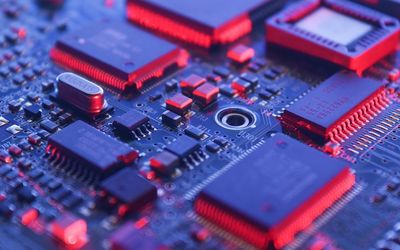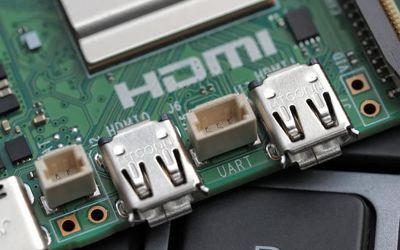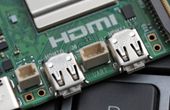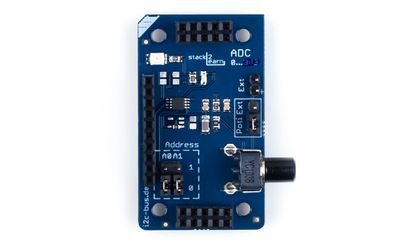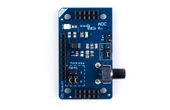STMicroelectronics SR5E1E7 Stellar E1 Automotive MCU Evaluation Board
A socket-based evaluation board for SR5E1E7 Stellar E1 Automotive MCU.
Technical Specifications
| Product Type | Evaluation Board |
| Core | ARM Cortex M7 |
| Communication | LIN, I2C, SPI, UART |
| Package | TQFP176 |
| Databus | 32 bit |
| Applications | Automotive Applications like OBC, DCDC and motor control |
| For Evaluation of | SR5E1E7 Stellar E1 |
Overview
STMicroelectronics SR5E1-EVB7000P is an evaluation board for the SR5E1E7 Stellar E1 automotive MCU. The evaluation board provides access to all the functionalities available in the Stellar E1 thanks to its QFP176 package, offering high-resolution timers, and multiple interface communication modes like UART, I2C, and SPI. Moreover, the board is designed to enhance user-friendliness, featuring control buttons and indicator LEDs. The hardware comes with an Eclipse-based integrated development environment (IDE) featuring various application examples for rapid prototyping and deployment. The evaluation board provides intuitive frameworks for testing automotive applications like motor control, on-board charging (OBC), and DC-DC applications.
Socket-Based Design for Seamless Evaluation
The SR5E1E7 evaluation board offers a socket-based design with its QFP176 packaging. Therefore, it allows easy and rapid prototyping of vast automotive applications. It works as a plug-and-play environment for testers to bulk-deploy different applications in automotive control.
For instance, the board can be used for motor control applications to control various moving parts in the automotive sector. Likewise, it offers support for OBC allowing developers to test and integrate smart charging solutions in electric vehicles. Moreover, there is support for DC-DC applications.
The board features several input and output channels that enhance the accessibility of key functionalities in the SR5E1E7 microcontroller. Its high-resolution timers enable highly precise timing applications and sensing capabilities with SAR-ADC and SD-ADC modules.
There are dedicated connectors for convenient integration with the ADC modules ensuring rapid testing of control loop applications.
Thanks to the essential LED indicators and buttons, the board can be used as a standalone unit for workbenches and laboratory-based applications. All integrated components on board have been designed for normal temperature applications.
Advanced Communication Interfaces to Integrate Versatile Sensor Modules
The STMicroelectronics SR5E1E7 evaluation board offers flexible and versatile communication interfaces like LIN, UART, I2C, FDCAN channels, and SPI. Therefore, it can accommodate wide-ranging sensors making it a suitable option for modern electric vehicles.
Its GPIO pin array is designed conveniently, allowing developers to integrate various digital and analog sensing modules. It has a compact form factor, is easy to carry around, and operates at relatively low DC voltages powered by a plug-and-play adapter.
Moreover, its powerful Arm® Cortex®-M7 core allows it to handle complex algorithms more efficiently. The ST StellerStudio software is a freely available Eclipse-based IDE that can be downloaded from the official ST website to support easy integration and prototyping. The application features ready-to-use examples to allow developers to quickly adapt to the development kit. Moreover, it offers extensive support thanks to a robust framework for designing and deploying embedded applications for automotive control.
Where to find it

Mouser Electronics
Mouser Electronics is a worldwide leading authorized distributor of semiconductors and electronic components.



